POWER GENERATION
Limpopo’s Lephalale – the SA town that Eskom and coal built
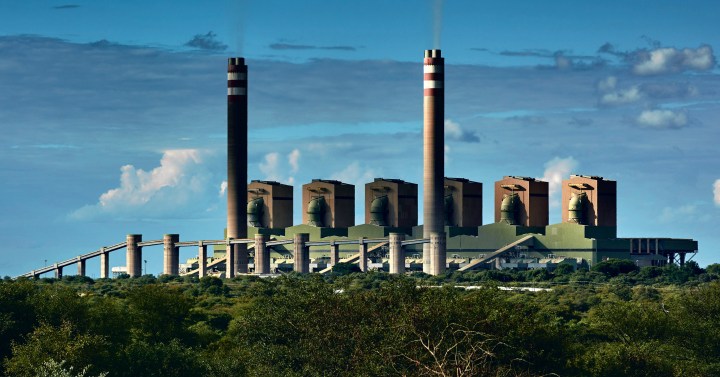
A trip to the Limpopo town Lephalale, which hosts two coal-fired power stations and a coal mine, makes it clear why this dirty energy source will be so difficult to dislodge as South Africa’s prime choice for generating electricity – and why the town fathers will fight it too.
There are 240 guesthouses in Lephalale, a town of 140,000 people in northern Limpopo with no discernible tourist attractions. That is 10 times as many guesthouses as can be found in the neighbouring towns of Vaalwater or Modimolle. There are a further 63 guest farms, three hotels and seven lodges – meaning that, on any given night in Lephalale, there are about 4,304 beds for paying guests.
And pay they do. A fairly basic three-star establishment in this town can cost over R1,000 a night. At the most popular restaurant in Lephalale, the prices are on par with South Africa’s big cities. Lamb chops can set you back close to R500. On a recent Monday evening, the place was heaving. When I asked a waitress why it was so busy, she shrugged and said simply: “Eskom people.”
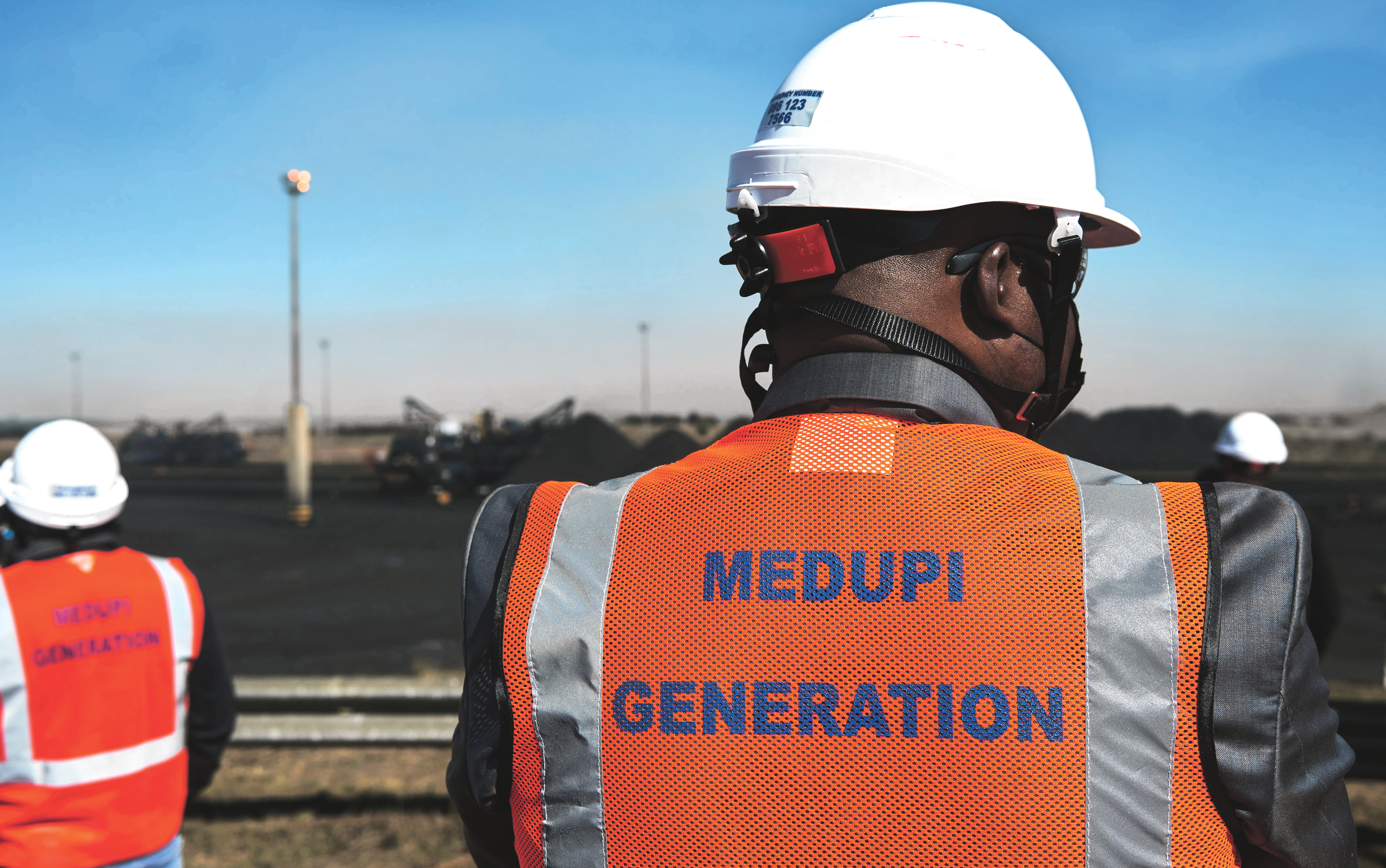
Visitors wearing Medupi jackets tour the Kusile coal-fired power station, operated by Eskom Holdings, in Delmas, Mpumalanga province, South Africa, on 8 June 2022. (Photo: Waldo Swiegers / Bloomberg via Getty Images)
Eskom: Bringing the good times
Lephalale’s first boom time was back when it was still known as Ellisras. Between 1988 and 1993, the coal station of Matimba was being built and the town cashed in. But locals say that was nothing compared with the coal rush, so to speak, during the construction of Medupi, which began in 2007 and is continuing to this day.
“The boiler and turbine contracts for Medupi are the largest contracts that Eskom has ever signed in its history,” Eskom’s website announced at the time. The Medupi project more than tripled the population of Lephalale as people flocked to the area to take up (very) well-paying jobs.
A former HR manager at Medupi, speaking on condition of anonymity, said: “We were paying welders R50,000 a month.”
A Lephalale accountant, who previously did the taxes for many Eskom contractors, confirmed this. Where welder salaries elsewhere in South Africa might be from R16,000 to R21,000 a month, at Medupi they could expect to earn between R38,000 and R51,000.
“The money never made sense. What a welder used to earn there was just weird,” the accountant said.
The Eskom money pouring in skewed the entire economic ecosystem. “Most guys had a housing allowance of R21,000 a month,” recalled the accountant.
Lephalale locals fell over themselves to cash in. They bought and rented out houses for what would be considered ridiculous prices elsewhere in northern Limpopo (R7,000 a month for a “bachelor flat” in a garage, to cite one 2015 example), set up informal housing on their farms and launched guesthouses from scratch.
“You couldn’t believe how quickly these people put up guesthouses,” the accountant said. He remembers seeing tannies (aunties) mass-producing packed lunches for guesthouse occupants, with meat and rice doled out in polystyrene containers at a cost of R60 to R120 a pop.
Brand-new VW Polos and Audis flooded the roads. Today in Lephalale you can find VW, Renault and Nissan dealerships selling new models.
The Lephalale Mall is a gleaming temple of modern commerce: upscale to a degree that would be bizarre in most other bushveld towns.
Talk to locals, and they’ll tell you that the glory days are behind them.
“The boom is over. You are five years too late,” an estate agent said. She meant that the completion of most of the work on Medupi had seen many contractors move on.
But there are still other games in town. Mining company Exxaro runs the local Grootgeluk mine, which has a 40-year contract to supply coal to Eskom.
“Exxaro is now giving employees a grant to buy [property], so now there’s nothing to rent. All the flats are sold,” the estate agent said.
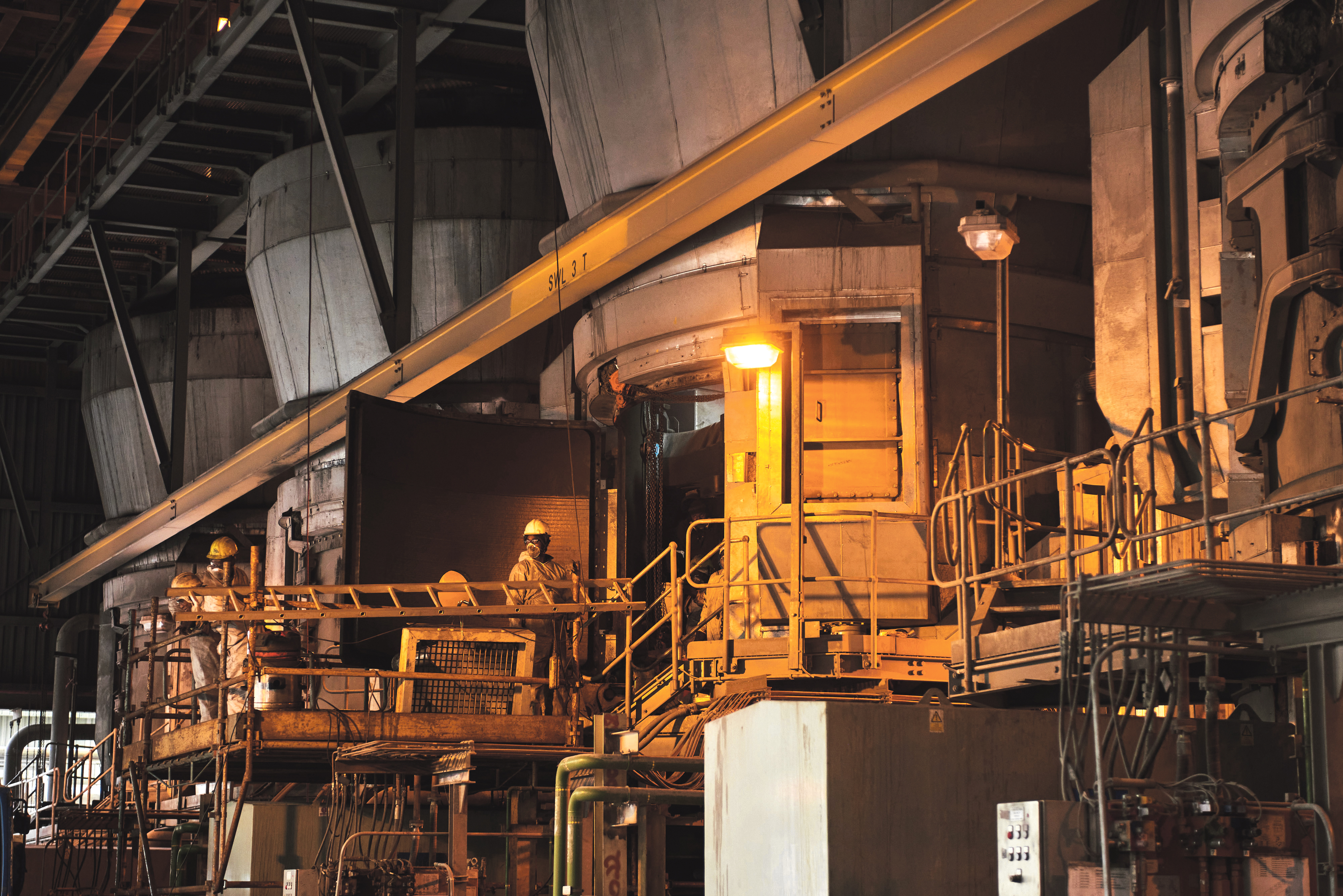
Workers carry out maintenance on a coal mill during a media tour of the Eskom Holdings Medupi coal-fired power station in Lephalale, South Africa, on 19 May 2022. (Photo: Waldo Swiegers / Bloomberg via Getty Images)
Coal will fuel future prosperity
Lephalale sits on the Waterberg coalfields, the home of an estimated 40% of South Africa’s total coal reserves. The local municipality’s Integrated Development Plan (IDP) for 2022 to 2027 makes it clear what a boon this is considered to be, with the town’s economic future seemingly inextricably linked to its ability to dig up and process coal.
“Coal mines on the eastern Highveld in Mpumalanga cannot keep up with the demand as some are reaching the end of their productive lives and can only supply medium- to low-grade coal. In comparison, the Waterberg coalfields are still relatively unexploited and have large reserves of high-grade coal available,” the IDP enthuses.
“It is therefore reasonable to assume that the municipality could host another three coal-fired power stations after Medupi…With an opencast mining resource of 12.5 billion tonnes, these power stations can be sustained for 156 years.”
Environmentalists, energy experts and many economists would greet those words with slack-jawed horror. But I did not meet a single person in Lephalale who voiced concern about coal, or about the stunning proximity in which Lephalale locals live to two of the world’s largest coal-fired power stations.
The silhouettes of Medupi and Matimba dominate the skyline here: two industrial citadels belching out their dark emissions, day in, day out. The township of Maropong trails off almost literally at Matimba’s entrance.
The trade-off is that the air of general prosperity that Lephalale exudes extends even to its township. Only 12.53% of Lephalale households are indigent, notes the IDP, and more than a quarter are classified as “high income”.
The Faustian pact into which Lephalale residents are tied puts their health at risk. After the government gave authorisation in 2022 for a new coal mine in Lephalale, environmental group Earthlife Africa has gone to court in an effort to halt the development. The group is being represented by attorneys at the Centre for Environmental Rights, which released a study in March this year on the existing and projected air quality in Lephalale.
Among its findings are that “existing air pollution in Lephalale from Medupi and Matimba power plants and the Grootgeluk mine increase the risk of a wide range of health outcomes for local residents, including pre-term birth (3%) and premature mortality (2%)”.
If the proposed new coal mine is allowed to go ahead, the report estimates that emissions “will lead to a loss of 3,700 IQ points and 500 lives”.
Fierce political contestation
Where there is money, there is heated political conflict – and Lephalale is no exception.
The town played host to one of the more unusual South African political mini dramas of recent years in late 2022, when a DA councillor managed to get himself elected as mayor as a direct result of ANC infighting.
“I went to the ANC and said, guys, vote for me,” is how Nico Pienaar (33) explains his ascent to the mayoral office.
So split was the local ANC that Pienaar managed to convince it that a DA mayor was a better option than the ANC candidates. After the ousting of ANC mayor Alpheus Thulare through a motion of no confidence from his own party, Pienaar was installed as mayor of Lephalale in October 2022. The DA had just three councillors; the ANC had 19.
Pienaar’s extraordinary political stagecraft won him the instant attention of the national DA.
In Lephalale, Pienaar got to work immediately, in the fashion of popular uMngeni mayor Chris Pappas. Pienaar’s Facebook page from the time shows him out with road crews at night delivering hot asphalt for filling potholes – a kind of hands-on approach that won him support across the political spectrum.
Inevitably, his reign was short-lived. “The ANC could see people turning against them. They realised, if we keep this man in office, we will lose votes,” Pienaar told me. By March 2023, he had been removed through a motion of no confidence.
Pienaar, like everyone else I met in Lephalale, wasn’t about to bash coal.
“Is it fair to cut off that economic development to the people of Lephalale? Is it fair that Europeans are looking down on us for what they have been doing [exploiting coal energy] for decades?”
But his hope is that future economic development in the area may also come from renewable energy development. “We are very well endowed with solar in Lephalale, and we are close to a grid line – so the infrastructure to distribute electricity is already here and we can just tap into it,” Pienaar said.
At both Medupi and Matimba I was permitted to enter the grounds without issue, despite heightened concerns about sabotage and signs everywhere reminding people that the power stations are National Key Points. At Matimba, a lone security guard lazing under a tree barely looked up as I drove by.
“Welcome to Medupi Power Station 4th Largest Coal Fired Power Station in the World,” brags a sign at the entrance to the newer station.
Seen in person, the size of Medupi is almost breathtaking: a hulking city unto itself. From underneath its shadow, the prospect of a coal-free South Africa suddenly felt very distant indeed. DM168
This story first appeared in our weekly Daily Maverick 168 newspaper, which is available countrywide for R25.
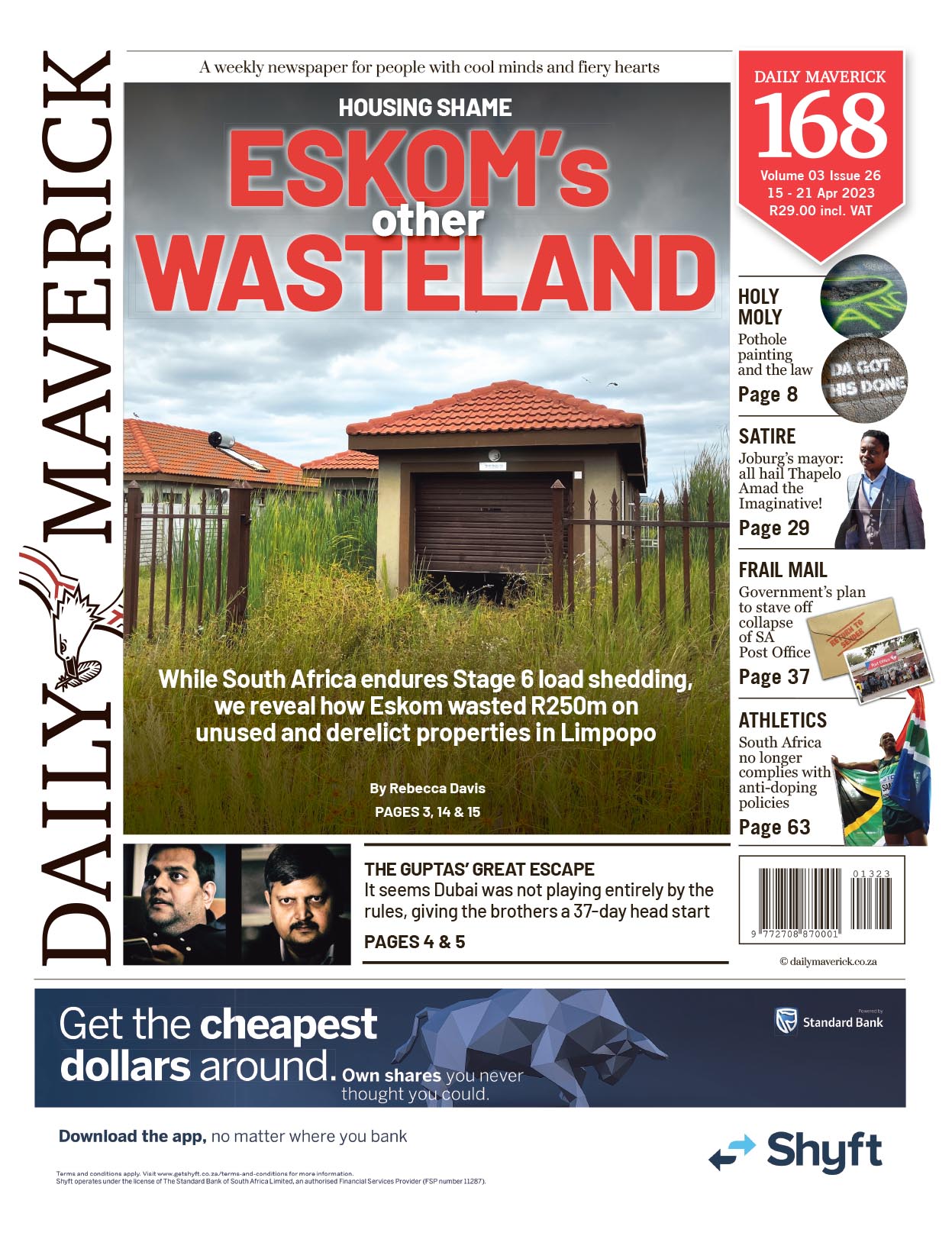

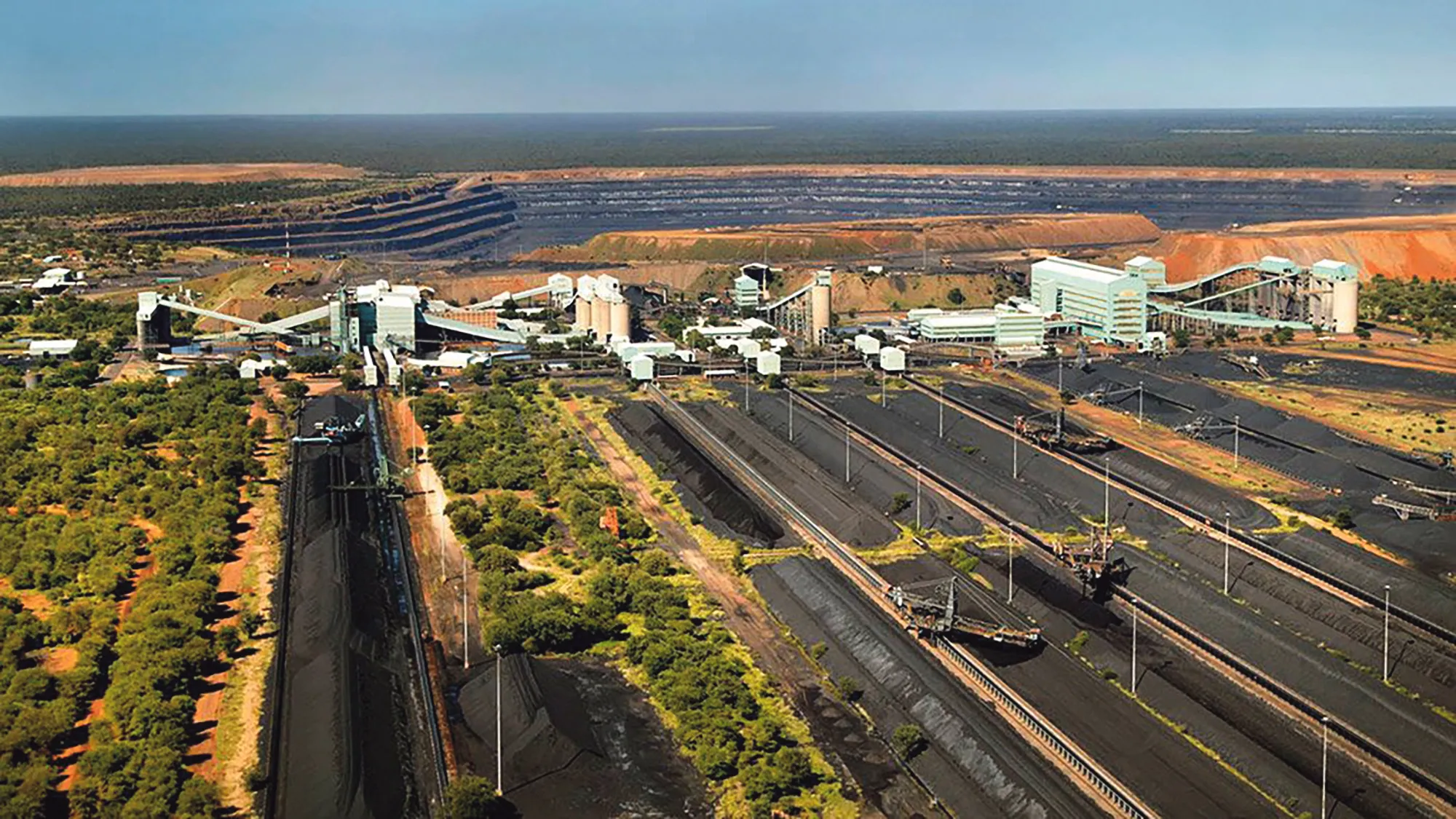



















 Become an Insider
Become an Insider
Coal is going, but not because of the environmental issues:
1. Eskom is breaking coal power capacity faster than it can build it. A broken power unit needs no coal.
2. Solar plus storage is cheaper than grid energy plus if you do it your side of your fence you are freed from loadshedding.
Game Over
Please write a similar article about one of the Northern Cape Towns where there is a lot of renewable energy. De Aar for example – one where there wasn’t huge mining before the renewable energy started. I have no idea of the outcome but very curious to see if it did create jobs – short and long term
That’s a great idea, thanks so much!